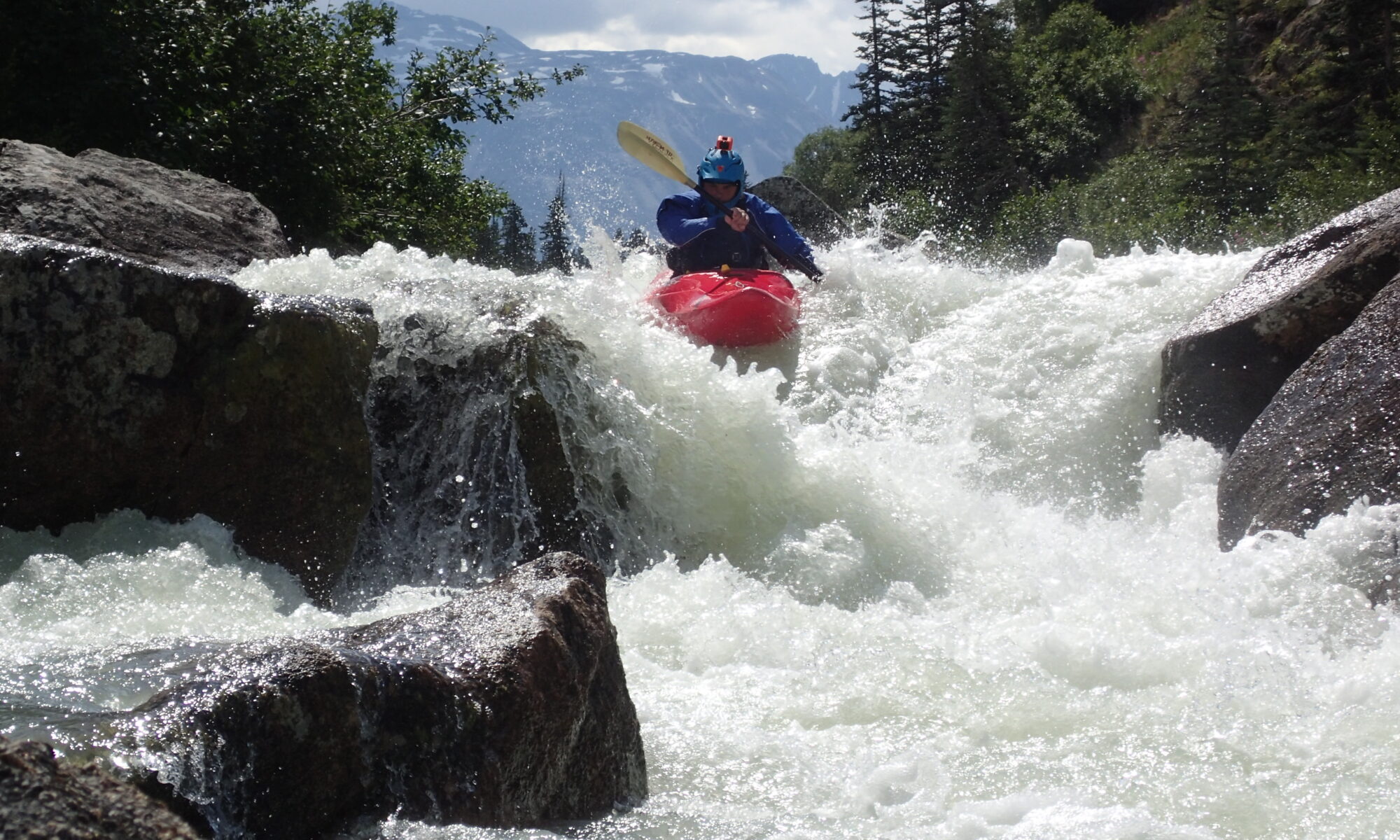For the last 20 years I have been working as a fish tech on various rivers working with various salmon species.
We go into the field mid April and the first project is Smolt tagging. Fish traps are set-up up and down the river to catch Chinook and Coho smolt that are migrating out to the Pacific Ocean. These fish then have a coded wire tag (CWT) inserted into their nose and released. The tag has a code that will be able to tell bioligists when and where the fish was tagged. This will help in tracking the fish and making population estimates.
Around the same time the Fishwheel camp crew are catching chinook that are migrating home to spawn. Because the water is to low at the beginning of the season for the wheels to spin properly, these fish are caught in a net. An under-sized mesh is used to capture the fish and they are also removed from the net immediately to minimize any stress. A scale sample is taken, they are then measured, sexed, have a numerical and uniquely colored (by specie) Tag applied to them and then released. When the water gets high enough for the wheels to spin properly they are used to catch the fish and the net is no longer used. The fishwheel is a good capture method as it runs 24 hours a day and stress on the fish is minimal. The fishwheels run until mid September or when the water gets to low to spin them properly. The nets are then used until the end of the season in mid October.
The tags applied to the salmon are used to help in assessing run timing of the different species using mark recapture. If you take how many tags were applied at the fishwheels and how many were recovered in the fishery above the border you can go into the wonderful world of Statistics and make an estimate on how strong the run is currently. You can also estimate travel times by finding out when the tags were applied and when they were recovered on the spawning grounds or at a wier.
Scale samples are used to get an age of the fish. You read a scale by counting the rings present on the scale.Thin darker rings represent winter because the cold inhibits the growth of the fish and the wider lighter rings represents summer because the warmer water causes the fish to grow quicker. The ages can then be used to make an estimate of the run size the following year. Since most fish return by a certain age year you can look at the percentage of an age class that returned this year and make an assumption of the percentage of that age class returning next year. So if historically 70% of the fish are age 4 and 30% are age 5 and you have a high return of age 5 fish in the current year,then you can assume that the following year their will be a high return of age 4 fish.
Otoliths, A small bone located in the brain cavity of the salmon, are also collected to look for thermal marks. A thermal mark is a pattern of rings that are applied in the hatchery when the fish are very small. These marks are applied by either adjusting the temperature (or pressure) of the water the fish are in. These marks are coordinated between Canada, U.S., Russia and Japan so you can tell what year, country and Hatchery the fish came from and what system the fish was released into. You can also get an idea of the % of wild vs hatchery fish by taking a random sample from the commercial fishery or a wier.





